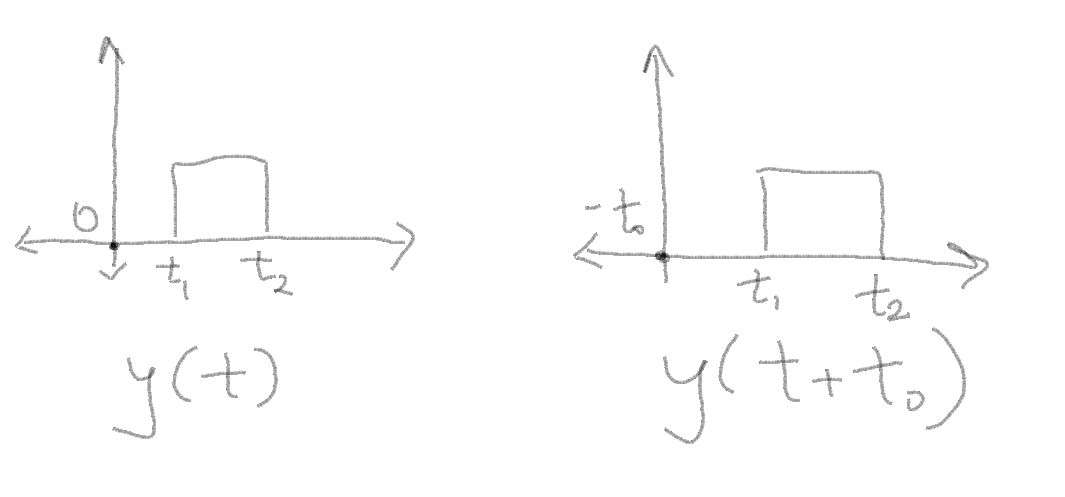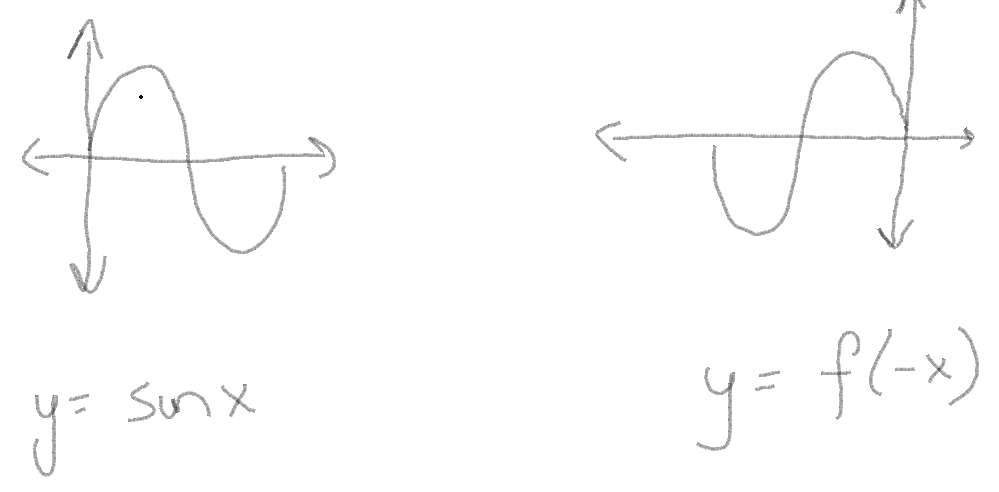| Line 1: | Line 1: | ||
Time dependent changes- | Time dependent changes- | ||
1. Time delay- <br /> | 1. Time delay- <br /> | ||
| − | |||
In simple terms you are shifting the original signal by a factor. | In simple terms you are shifting the original signal by a factor. | ||
For eg. | For eg. | ||
| − | [[File:Graph1.1.PNG|Time shift example]] | + | [[File:Graph1.1.PNG|Time shift example]]<br /> |
| − | + | ||
In this example as you can see, a simple way of understanding time shift/delay is by looking at how the graph changes when you want a shift in the signal. | In this example as you can see, a simple way of understanding time shift/delay is by looking at how the graph changes when you want a shift in the signal. | ||
2. Time scaling- <br /> | 2. Time scaling- <br /> | ||
| − | [[File:Graph1.2.PNG|amplitude scaling graph example]] | + | [[File:Graph1.2.PNG|amplitude scaling graph example]]<br /> |
| − | + | ||
In simple terms you are shifting the height/width of the graph of a signal. The change in graph depends on the value of a. If |a|>0, then the height increases, else it decreases. | In simple terms you are shifting the height/width of the graph of a signal. The change in graph depends on the value of a. If |a|>0, then the height increases, else it decreases. | ||
3. Time reversal-<br /> | 3. Time reversal-<br /> | ||
| − | + | [[File:Graph1.3.PNG|time reversal]]<br /> | |
| − | [[File:Graph1.3.PNG|time reversal]] | + | |
When you negate the independent variable, the graph of the dependent variable changes to a mirror image of the original graph. | When you negate the independent variable, the graph of the dependent variable changes to a mirror image of the original graph. | ||
Even/Odd Signals-<br /> | Even/Odd Signals-<br /> | ||
| + | [[File:Graph1.4.PNG]]<br /> | ||
| − | |||
As can be seen in the above function, the graphs do not change when you substitute x as -x. Similarly in signals, when a signal remains unchanged under time negation, it is termed as an "even" signal. | As can be seen in the above function, the graphs do not change when you substitute x as -x. Similarly in signals, when a signal remains unchanged under time negation, it is termed as an "even" signal. | ||
Revision as of 20:16, 1 December 2018
Time dependent changes-
1. Time delay-
In simple terms you are shifting the original signal by a factor.
For eg.
In this example as you can see, a simple way of understanding time shift/delay is by looking at how the graph changes when you want a shift in the signal.
2. Time scaling-
In simple terms you are shifting the height/width of the graph of a signal. The change in graph depends on the value of a. If |a|>0, then the height increases, else it decreases.
3. Time reversal-
When you negate the independent variable, the graph of the dependent variable changes to a mirror image of the original graph.
As can be seen in the above function, the graphs do not change when you substitute x as -x. Similarly in signals, when a signal remains unchanged under time negation, it is termed as an "even" signal.





